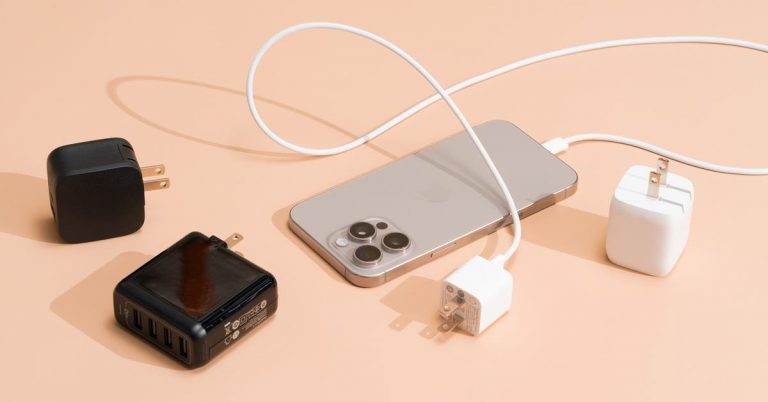The 6 Best Exercise Bikes of 2025
The BowFlex VeloCore is a sturdy, well-made bike that features a range of workout and class options via a one-year membership to Jrny (iOS, Android), BowFlex’s and Schwinn’s workout-streaming app. Available with two screen sizes, 16-inch ($1,800) and 22-inch ($2,200), the bike offers a feature not found on any others we’ve tested: the ability to lean from side to side, as you would on a regular bicycle. This has the potential to spice up rides, but we didn’t use it as often as we thought we might — the motion ultimately feels less natural than easing into a turn on a real bike. The VeloCore’s seat and handlebars adjust fully. Dual-sided pedals allow you to either clip in with cycling shoes (SPD cleats) or use toe cages. The magnetic resistance spans 100 levels; we typically had no trouble dialing it in precisely. However, the screen shook when we pedaled at higher cadences (particularly while we stood). The workout content wasn’t quite as strong as that of other platforms we tried. Aside from Jrny, this bike can connect to other apps, such as Peloton and Zwift, via your own separate device, but we weren’t able to sync the VeloCore’s cadence monitor to the Peloton app.
The Echelon Connect EX-5 operates through your own tablet (which you set in a tablet holder), and optionally connects the bike to the $39-per-month Echelon Fit app (iOS, Android) over Wi-Fi or via Bluetooth. It has dual-sided pedals, and the display is very similar to the Peloton Bike’s, including a leaderboard. But in our tests, the resistance felt inconsistent. In our tests, the Echelon Connect EX-5S-22 rode smoothly, but the resistance was inconsistent. The handlebars wiggled, and the pedals on the bike are placed far forward.
The Keiser M3i is a beautifully designed bike with V-shaped handlebars, artful lines, and the ability to connect to a variety of cycling and workout apps,like the Keiser M Series app (iOS, Android), which keeps track of your rides and syncs to other apps like Strava. The bike’s 24 resistance levels adjust smoothly with a lever, and this model accommodates one of the widest height ranges (4 feet 10 inches to 7 feet tall) and maximum weight capacities (350 pounds) we’ve seen. But the M3i may ultimately best serve serious cyclists with ambitious training goals.
The Matrix ICR50 connects easily to Zwift and other workout apps and provides a smooth, quiet ride. It’s easy to change resistances thanks to a small plastic lever located near the handlebars, and the foot pedal cages are secure. Some of our shorter testers wished the water bottle placement wasn’t so low (underneath the handlebars). Meanwhile, some of our taller testers found the handlebar placement tricky.
The Merach S26 offers one of the best deals we’ve seen for an exercise bike, costing about $250. It has a solid build and is pretty quiet, with a sturdy tablet/phone holder and amply-sized cup holders. But our biggest qualm was its display, which is on a small, round dial (similar to the display found on Merach’s rowing machines). The readouts are tiny, and it takes a few rides to understand which metrics are displayed.
The NordicTrack Commercial S22i Studio Cycle has a 22-inch tablet that displays studio and scenic rides produced by iFit, NordicTrack’s subscription-based workout-streaming platform ($39 per month for a family plan, $15 per month for an individual plan). The bike crams in a lot of features, including the ability to automatically adjust resistance, incline, and decline during an iFit ride. However, the screen shook noticeably during rides of various intensities in our tests, and the screen mount and handlebars felt unsteady. The left pedal on the first loaner we tested fell off mid-ride shortly after the bike arrived. The company sent us another bike, and though the pedal stayed put on that one, we found several complaints on Amazon reporting the same (or a similar) issue. The bike was the most difficult model to move from place to place of all those we tested. We also found it hard to adjust the height of the handlebars due to the size and weight of the screen.
The Schwinn 290 Recumbent Bike had the best monitor of the three recumbent bikes we tested, with clear, color-coded delineations for metrics, plus a thin shelf to store a tablet or phone. The straps on the foot pedals felt secure, but some of our smaller testers had problems reaching the handlebars, which are designed as a U-shaped bar in front of the monitor. Three testers felt the bike wobbled more than other recumbents and a majority of our group thought adjusting the seat was difficult.
We didn’t entirely dislike riding the Sole SB900, but it didn’t win us over, either. IThe resistance seemed undefined and we felt like we needed to turn the knob a lot to detect a change. The safety brake is a lever located separately from the resistance knob (most bikes combine the two functions), a placement that seemed unnecessary. The device holder and water-bottle holders feel cheap and the handlebars aren’t particularly comfortable. Also, the LCD console requires charging off the bike via a USB cable.
If you prefer indoor-cycling classes that can double as dance parties, the magnetic resistance SoulCycle At-Home Bike might be for you. Rather than monitoring metrics, SoulCycle classes focus on riding to the beat of the music. Riding requires a $40-a-month subscription to the Equinox+ app, which offers seven Equinox-affiliated fitness options (including Pure Yoga). The off-bike workouts aren’t accessible on the bike’s screen; you need to view them on a separate device. Solidly built and comfortable, the bike has a 21.5-inch touchscreen that is clear and bright, though we found it to be a bit unresponsive at times. (It does not rotate.) Dual-sided pedals accommodate either SPD or Delta cleats. The handlebars adjust fore and aft, which can help you dial in fit.The SoulCycle style is ultimately self-selecting — the most prominent metric is your “beat match,” or what percentage of the ride you stayed on rhythm, and it may not satisfy those wanting to track progress in a more traditional way.
The Sunny Health & Fitness Electro-Magnetic Resistance Recumbent Exercise Bike had the most comfortable seat of the recumbent bikes we tested, but the display felt dated, the water bottle holder couldn’t fit one tester’s 24-ounce bottle, and the upper console wobbled if pushed or leaned on, which didn’t inspire confidence if you need aid getting in or out of a bike.
The Yosuda Pro Indoor Cycling Bike L-010C disappointed us with its cheap feel (one tester called it a “tin can”). The resistance didn’t respond well, the flywheel was loud, and the LCD screen was so dim that we could barely read it.
This article was edited by Tracy Vence and Kalee Thompson.





